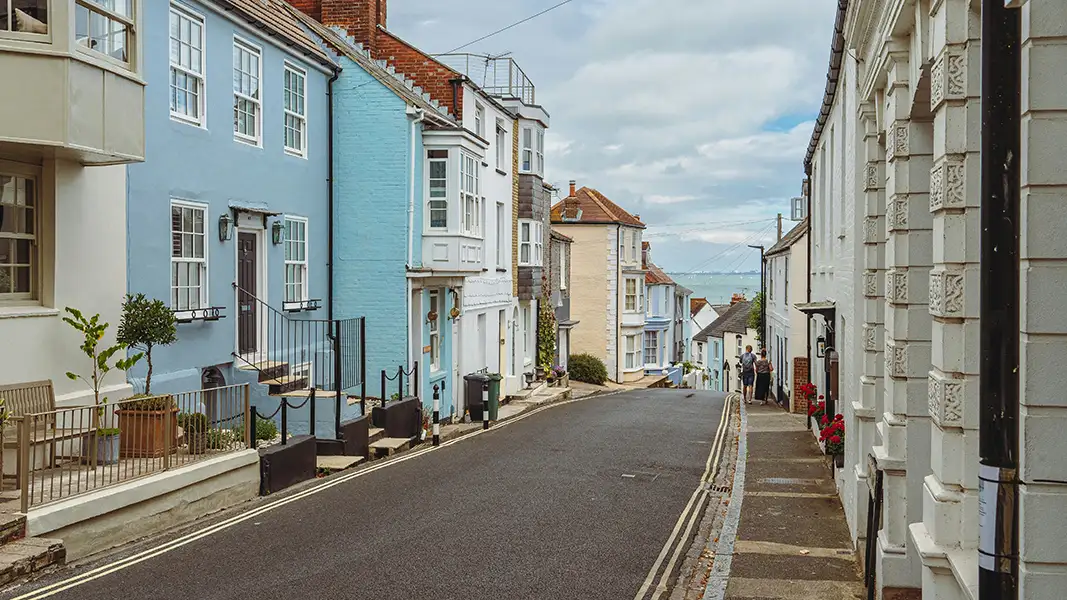Southampton – East Cowes
Ferry to Isle of Wight
Southampton – East Cowes
Ferry to Isle of Wight

Depending on the season their are usually 18 daily and 124 weekly sailings between Southampton and East Cowes.Red Funnel provides the ferry from Southampton to East Cowes. Southampton East Cowes ferries take around 1 hour. The ferry costs between $138.91 and $582.96, depending on ticket details. Prices exclude any service fees. Ferry timetables change seasonally, use our Deal Finder to get live pricing and availability for ferries from Southampton to East Cowes.
The earliest Southampton East Cowes ferry typically departs Southampton at about 03:00 and the last ferry usually leaves at 23:59.
Ferries from Southampton to East Cowes sail in around 1 hour. The fastest ferry is approximately 59 minutes. Ferry duration can vary by ferry provider and can be impacted by weather conditions.
There is 124 weekly sailings from Southampton to East Cowes provided by Red Funnel. Timetables can change from season to season.
The price of a ferry from Southampton to East Cowes typically range between $138.91* and $582.96*. On average the Southampton East Cowes ferry is $389.40*. The cheapest Southampton East Cowes ferry prices start from $138.91*. The average price for a foot passenger is $120.69*. The average price for a car is $412.17*.
Pricing will vary depending on number of passengers, vehicle type, route and sailing times. Pricing is taken from searches over last 30 days and exclusive of service fees, last updated 1 April 2025.
The distance between Southampton to East Cowes is approximately 12 miles (20km) or 11 nautical miles.
Yes, Southampton East Cowes ferries allow cars onboard with Red Funnel between Southampton and East Cowes. To view car ferry tickets and prices between Southampton and East Cowes use our Deal Finder.
Red Funnel allow foot passengers on Southampton East Cowes ferries.
Currently, are not permitted to board ferries from Southampton to East Cowes.
More routes than anyone else.

Compare fares, times & routes in one place.
Change plans easily with flexi tickets.

Book e-tickets & manage trips in-app.
Live ship tracking & real-time updates.

Top-rated customer support when you need it.
A glance at the map gives some idea of the strategic maritime importance of Southampton, which stands on a triangular peninsula formed at the place where the rivers Itchen and Test flow into Southampton Water, an eight-mile inlet from the Solent. Sure enough, Southampton has figured in numerous stirring events: it witnessed the exodus of Henry V's Agincourt-bound army, the Pilgrim Fathers' departure in the Mayflower in 1620 and the maiden voyages of such ships as the Queen Mary and the Titanic. The Second World War hit Southampton particularly hard, because of its strategic importance as the major industrial area on the South Coast. Pockets of Georgian architecture remain, but much of the city was levelled. The accuracy of the locally-based Ordnance Survey's maps did not go unrecognised by the Luftwaffe: the German bomber pilots used them to bomb Southampton.
Famed for its world famous yachting scene, Cowes Port has become a globally acknowledged centre of boat-building. Found on the northern coast of the Isle of Wight, Cowes Port is one of the smaller towns of the island, though possibly the most widely recognised due to its hugely popular yachting and royal connections. Also known as the ‘Floating Bridge’, Cowes Chain Ferry carries foot passengers and vehicles on the short crossing to East Cowes, across the narrow mouth of the fast flowing River Medina. The ferry route runs frequently throughout the day, beginning very early in the morning and running till late in the evening. The harbour has created several jobs around the town, contributing in excess of £25 million worth of revenue to the local economy.